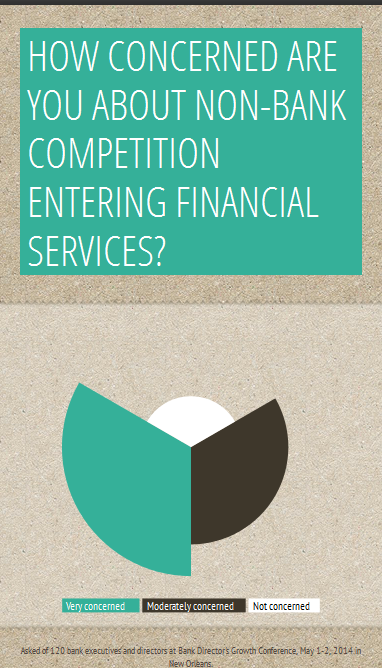A Bank Director audience survey found that 91 percent of bank executives and directors are worried about competition from outsiders like Walmart, Google and PayPal. Bank Director Editor Jack Milligan addresses whether they really should be worried, or whether this is just a distraction from the bigger challenges plaguing the industry.
Walmart has announced that it is launching a money transfer service that will enable its customers to send funds from one store location to another at fees that are significantly less than many of its competitors. This is not the first time that Walmart has offered a money transfer capability – for the past 12 years it has provided a service with many more features through MoneyGram International – but now it is taking on more of a principal role.
Since 2011, Walmart has also teamed up with American Express to offer a prepaid card product called Bluebird that can be used in the same way as a debit card linked to a checking account, and provides its customers with a retail banking capability that does not come from a traditional bank. (American Express became a bank holding company during the financial crisis in 2008 so it could gain access…
View original post 695 more words

